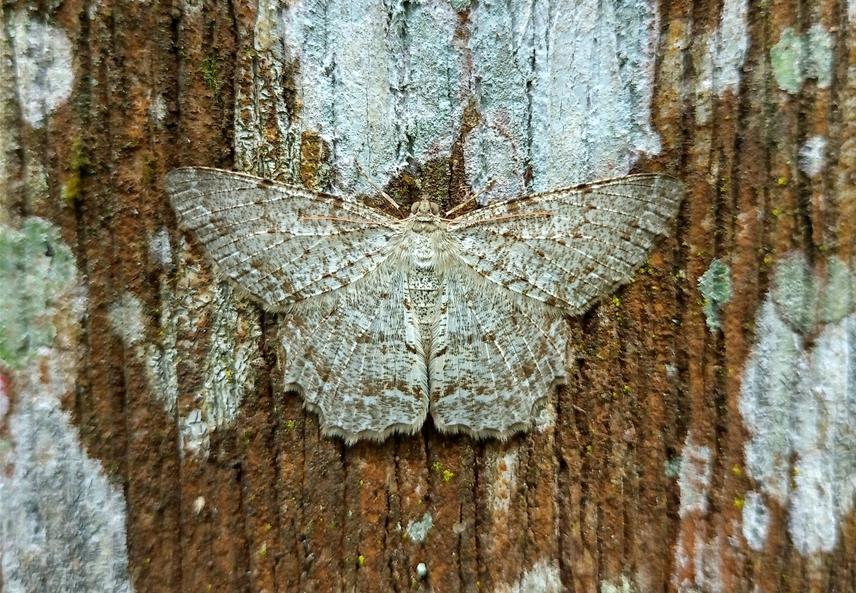Silvina Anahí Belliard
Insects are essential to healthy ecosystems, performing critical functions like pollination, nutrient cycling, and natural pest control. Yet, around the world, insect populations are declining at alarming rates, driven by habitat loss, pesticide use, and climate change. Monitoring insect communities across broad regions is vital to track biodiversity trends and guide conservation efforts. But most existing monitoring is geographically biased, with major gaps in tropical and subtropical regions, places that host the greatest insect diversity.

Geometrid moth (genus Epimecis) – part of the species group to be monitored in the project – resting on tree bark in the Paraná Atlantic Forest. © Hernán Figueredo.
In South America, the Paraná Atlantic Forest (a subtropical ecoregion spanning southern Brazil, northeastern Argentina, and eastern Paraguay) is renowned for its exceptional insect diversity and is recognised as one of the most biodiverse areas in the world. However, the expansion of agricultural frontiers also makes it one of the most vulnerable ecosystems.
Expanding insect monitoring across these biodiversity-rich areas requires scalable technologies. In recent years, advances in compact, high-resolution cameras and machine learning have enabled the development of automated camera traps that can identify insect species in the field. These systems are transforming biodiversity monitoring by dramatically reducing labour and eliminating the need to collect or kill specimens.
Our project will deploy an automatic monitoring system called Mothbox to track nocturnal moth populations in the corridor Península de Andresito, a key section of the Paraná Atlantic Forest that links Iguazú National Park in Argentina with Iguaçu National Park in Brazil.
Moths are ideal indicators of ecosystem health: they are incredibly diverse (making up about one in six known insect species), play key roles as pollinators, and are highly sensitive to environmental changes. By tracking their populations, we can detect shifts in biodiversity and broader forest health.
This initiative has two key goals. First, we will train a machine learning model to automatically identify local moth species, creating a baseline for long-term monitoring. Second, we are building a community-powered network, working with landowners, NGOs, and residents to sustain and expand these efforts. Over time, we aim to grow this network across the entire Paraná Atlantic Forest, equipping local stewards with the tools to protect this vital landscape from mounting threats like agricultural expansion.
Header image: Riverbank habitat along the Iguazú River within the Tymbachu’i Reserve, another key environment to be surveyed for moth diversity in the project’s study area (Misiones Province, Argentina). © Juan Hurtado.